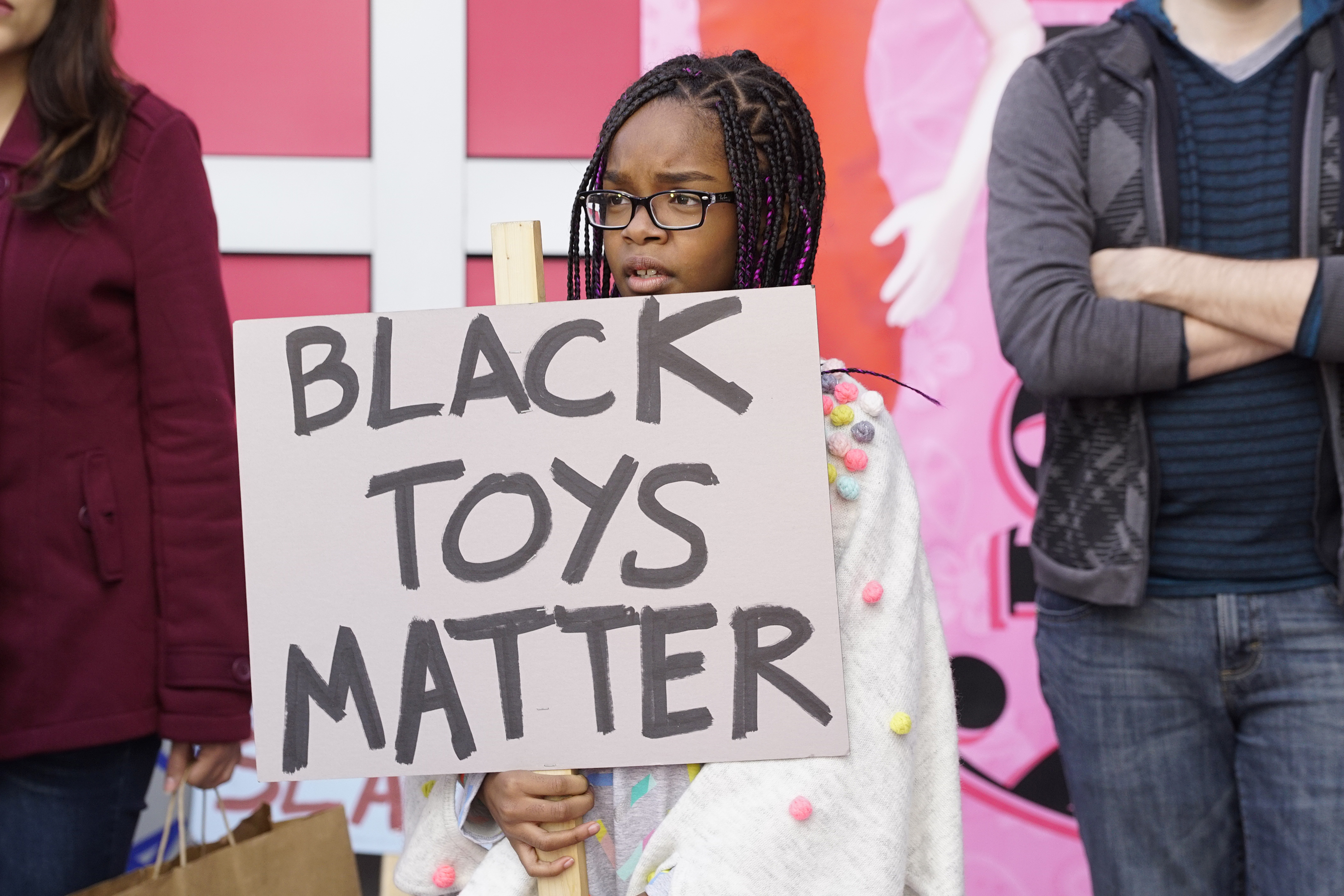A few years ago, Black-ish had an episode called “ToysRn’tUs” where Diane and Bow protested after they found that the toy company they wanted to buy from had a ton of options but only two Black dolls–a slave and a civil rights activist, who both carry the moniker “Sassie.” At the protest, Diane holds up a sign reading “Black Toys Matter,” and in the episode they talk about how racial representation in toys makes a difference in the self-image, self-esteem, and aspirations that children develop. But are toys the real problem? And if not, can changing the toys we play with fix the real problem?

Back in the 1940s, two psychologists named Kenneth B. Clark and Mamie P. Clark did a study that is now called “the Doll Test” where they asked Black kids a few questions about Black and White dolls in order to see what racial attitudes these kids have already adopted and how it intersects with their perception of their own racial identity. They found that kids showed a clear preference for the White doll, and these Black children already had an engrained idea of their own racial inferiority by the age of five.
Now, to be clear, the dolls themselves did not cause an inferiority complex; systemic racism in the cultural, legal, and illegal practices that were going on in the 1940s had some impact on these kids before they ever came across these dolls. More than half a century later other researchers have recreated the doll experiments, and some have improved the experiments (full study here). Although a lot has changed since the 40s, the experiments consistently point to the influence of systemic racism leading Black children to develop anti-Black attitudes.
So, the problem of anti-Black racism in children is real, it persists, and the toys themselves did not cause the problem. But I do believe that they can be part of the solution.
Any child psychologist will tell you that playing is a huge part of how children learn about the world and about themselves. Even though children get a lot of racist (and sexist, homophobic, transphobic, classist, vindictive, ect.) messages from the influences around them, I believe we can contribute something to their anti-racist formation with the ways we socialize children when we play with them or teach them to play independently. The resources that we provide them with in terms of the physical toys and the ideas we teach become seeds for their imagination to develop in creative ways.
Researchers find that teaching your kids to be proud of their racial heritage from an early age and combining that with discussions of how to cope with inevitable discrimination balance each other out to create positive psychological and academic outcomes for kids (here is a free reference and the journal article they cite). This works way better than what many parents (especially White people) try to do in raising their children: ignore discussing race for as long as possible or approach racial difference through a color-blind lens. Among other things, these strategies don’t prepare kids to withstand, confront, or even acknowledge racism in the world.
Given (1) the fact that kids learn by playing, (2) there are great benefits to teaching racial/ethnic pride alongside issues of discrimination, and (3) I care about more than just racism, my hope is that I can help my son (and nephew, and whomever else) have a collection of Black, Indigenous, and people of color toys that they admire. And I plan to gift these toys to them while also teaching them about real life issues and spurring them on to imagine ways to transform the world for the better.
Got questions or comments? Please hit me up on Instagram @BlackToysMatterBlog.
